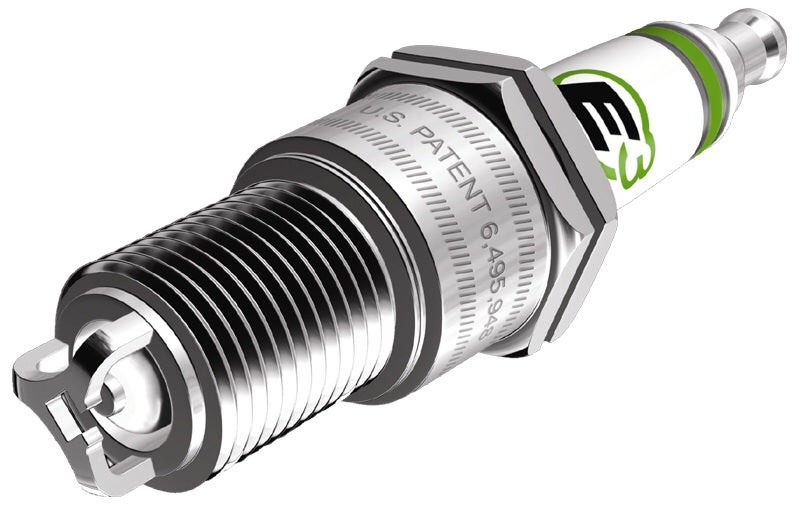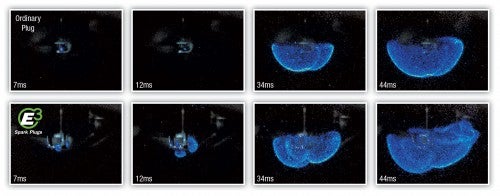 "Funktheduck" (funktheduck)
"Funktheduck" (funktheduck)
03/12/2015 at 16:34 • Filed to: None
 0
0
 18
18
 "Funktheduck" (funktheduck)
"Funktheduck" (funktheduck)
03/12/2015 at 16:34 • Filed to: None |  0 0
|  18 18 |

The Tavarish article video had these in it. Has anyone actually tested them to see if they improve anything? Are they worse for some cars versus OEM?
 BmanUltima's car still hasn't been fixed yet, he'll get on it tomorrow, honest.
> Funktheduck
BmanUltima's car still hasn't been fixed yet, he'll get on it tomorrow, honest.
> Funktheduck
03/12/2015 at 16:36 |
|
I don't think they make a difference. They might last longer, but that's about it.
 RamblinRover Luxury-Yacht
> Funktheduck
RamblinRover Luxury-Yacht
> Funktheduck
03/12/2015 at 16:37 |
|
I imagine that in something that is carbureted in a legendarily shitty way or has oil consumption problems, the mean time to fouling is *tiny*.
 Smallbear wants a modern Syclone, local Maple Leafs spammer
> Funktheduck
Smallbear wants a modern Syclone, local Maple Leafs spammer
> Funktheduck
03/12/2015 at 16:39 |
|
They won't hurt anything, they might fix certain issues in certain vehicles, but chances are you won't notice any difference.*
*paraphrasing. not my opinion. read something about them. can't remember where. no link.
 G_Body_Man: Sponsored by the number 3
> Funktheduck
G_Body_Man: Sponsored by the number 3
> Funktheduck
03/12/2015 at 16:45 |
|
I expect it to royally bork up your motor. Don't you want a safe, controlled spark, rather than this thing which sparks earlier than usual?
 Funktheduck
> G_Body_Man: Sponsored by the number 3
Funktheduck
> G_Body_Man: Sponsored by the number 3
03/12/2015 at 16:46 |
|
I honestly have no idea. Do they do that? I'm always skeptical of any products advertised on motor shows tv or internet.
 Funktheduck
> BmanUltima's car still hasn't been fixed yet, he'll get on it tomorrow, honest.
Funktheduck
> BmanUltima's car still hasn't been fixed yet, he'll get on it tomorrow, honest.
03/12/2015 at 16:47 |
|
That's what I was thinking the only possible advantage. Distributes the wear over 3 prongs instead of one.
 Funktheduck
> RamblinRover Luxury-Yacht
Funktheduck
> RamblinRover Luxury-Yacht
03/12/2015 at 16:49 |
|
I figured the only possible advantage is they last longer because it divides the wear over 3 prongs vs 1
 jariten1781
> Funktheduck
jariten1781
> Funktheduck
03/12/2015 at 16:50 |
|
What do they do other being harder to gap? I mean, you'd get trivially longer life from less wear on the ground...but meh. Seems pointless.
 Funktheduck
> Smallbear wants a modern Syclone, local Maple Leafs spammer
Funktheduck
> Smallbear wants a modern Syclone, local Maple Leafs spammer
03/12/2015 at 16:51 |
|
The only reason I asked about harm is I know some vehicles require certain types to function properly. I think I remember reading only use OEM style on my E30 because other types are either a waste of money or runs rough
 Funktheduck
> jariten1781
Funktheduck
> jariten1781
03/12/2015 at 16:53 |
|
The video explained the advantages but before they said those advantages they would say "well the e3 diamond fire technology...." Any time I hear a product name repeated over and over I think hard salesmanship and there's not necessarily an advantage but they want to get the name in your head.
 jariten1781
> Funktheduck
jariten1781
> Funktheduck
03/12/2015 at 17:00 |
|
Don't have access to the video, but it sounds like nonsense. At best you get less wear, at worst you're going to have weird shadowing of the flame kernel from the extra material out there.
 Stan
> Funktheduck
Stan
> Funktheduck
03/12/2015 at 17:00 |
|
Audi used to have multi electrode plugs factory and they were terrible. We used to swap them out for single electrode plugs for customers. This was late 80's to early 90's.
 Sam
> Funktheduck
Sam
> Funktheduck
03/12/2015 at 17:06 |
|
From reading online, it looks like they aren't a one size fits all. Some vehicles respond well, others don't.
 G_Body_Man: Sponsored by the number 3
> Funktheduck
G_Body_Man: Sponsored by the number 3
> Funktheduck
03/12/2015 at 19:24 |
|

I'm pretty sure that this flare-up of early detonation is not good for your motor.
 Funktheduck
> G_Body_Man: Sponsored by the number 3
Funktheduck
> G_Body_Man: Sponsored by the number 3
03/12/2015 at 19:50 |
|
I did some googling and the only concerns us I found is people like them in small, 2 stroke motors and lawn mowers. Everything else is all over the place. One review on amazon claimed they were responsible for several hundred dollars in repairs for his jeep.
I wasn't planning on buying any but now I know to steer clear
 AMGtech - now with more recalls!
> Funktheduck
AMGtech - now with more recalls!
> Funktheduck
03/13/2015 at 00:05 |
|
You don't really get an improvement in lifespan, there is still only one center electrode.
You will probably lose power because the extra ground electrodes are keeping the A/F mixture from reaching the spark. Then flame shadowing essentially creating multiple flange fronts which can cause ping/detonation.
You don't get more sparks. The number of sparks is determined by the coil and computer. You get sparks that are more inconsistent because there are so many more places they can go.
There's a reason that high end race cars and high end road cars use indexed plugs with single electrodes.
 Funktheduck
> AMGtech - now with more recalls!
Funktheduck
> AMGtech - now with more recalls!
03/13/2015 at 07:34 |
|
So the concensus of Oppo is these things are no benefit to potentially dangerous to your engine. I was mostly curious if anyone had actually tried them to compare to what the video said, but most people seem to know to stay away to begin with.
 Destructive Tester
> Funktheduck
Destructive Tester
> Funktheduck
03/14/2015 at 15:10 |
|
I've thought this as well. I'd think the best results would most likely be seen in engines with simple/nonexistent ignition variability since they would have more possible paths to ground and greater fouling and wear tolerance.